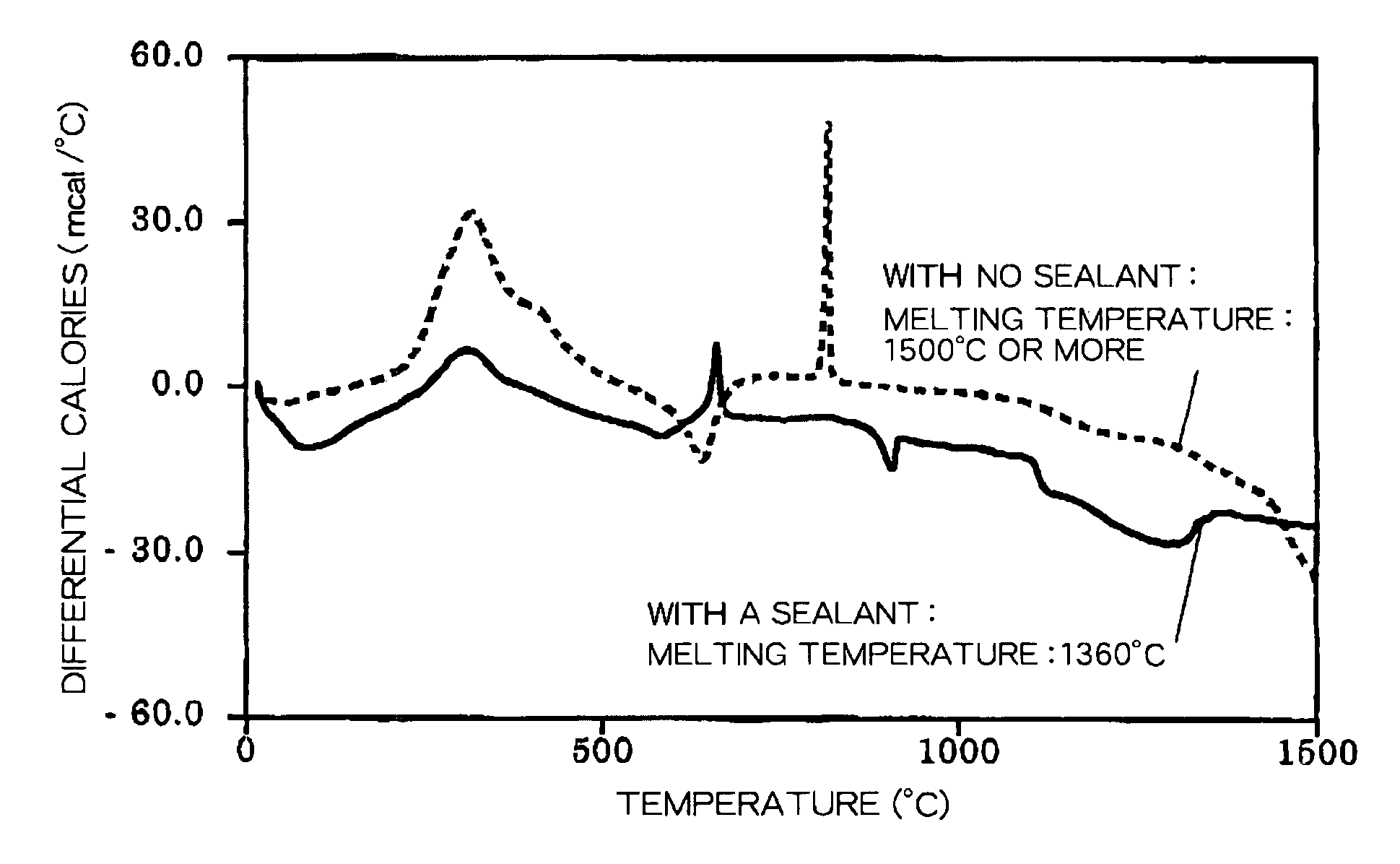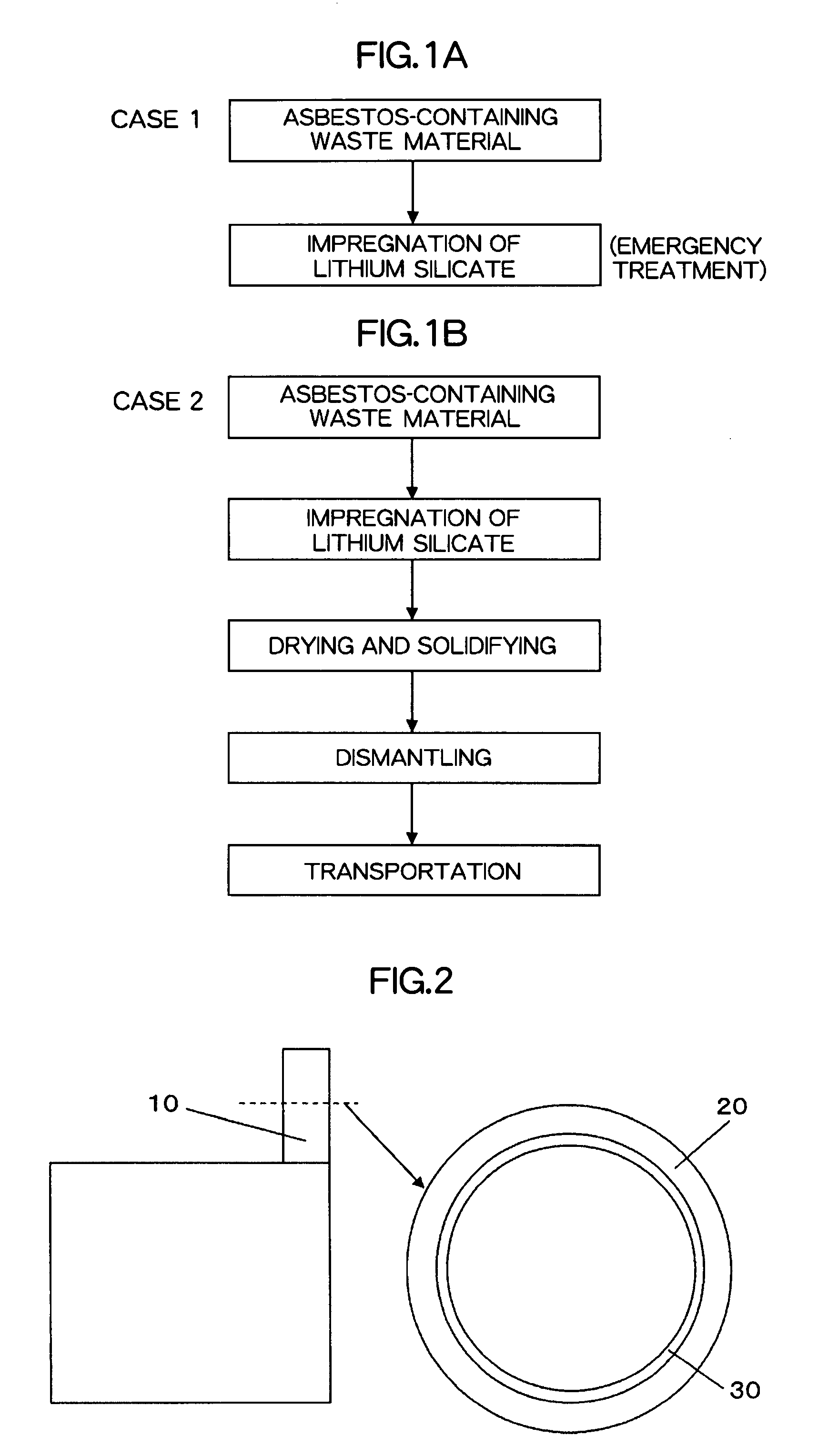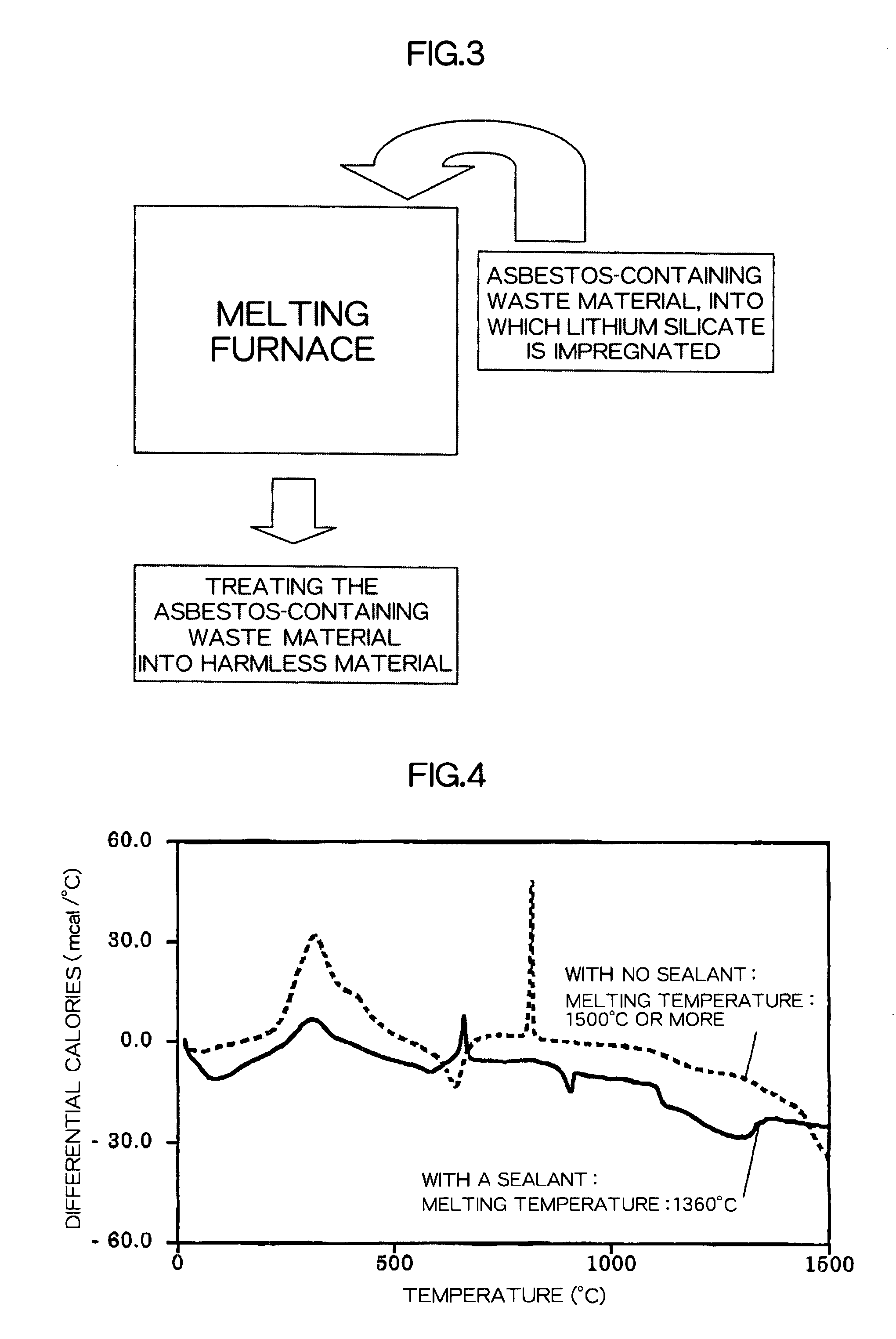Method of preventing exposure of asbestos-containing material, method of treating asbestos-containing waste material, method of melt treating asbestos-containing waste material, asbestos-containing waste material treated article, and asbestos-containing melt treated article
a technology of asbestos-containing materials and asbestos-containing waste materials, which is applied in the direction of solid waste disposal, etc., can solve the problems of preventing limiting the amount of asbestos-containing industrial wastes capable of being disposed by burying, and unsure whether an asbestos-containing material can be melted at low temperatures using such a chemical agent, so as to prevent the exposure of asbestos-containing dust, the effect of avoiding deliquescation and fluidization
- Summary
- Abstract
- Description
- Claims
- Application Information
AI Technical Summary
Benefits of technology
Problems solved by technology
Method used
Image
Examples
examples
[0063]Next, Examples of the present invention will be described.
[0064]FIG. 4 illustrates a DSC (Differential Scanning Calorimetry) chart from room temperature to 1500° C. with respect to an asbestos-containing material into which an aqueous lithium silicate solution is impregnated as a exposure preventing agent (Example) and an asbestos-containing material without sealant (Comparative Example). The solid line shows Example and the dashed line shows Comparative Example.
Regarding Example
[0065]As an asbestos-containing material, a sprayed material including asbestos chrysotile (chrysotile) in a proportion of about 100% by weight was used (FIG. 5). The thickness of the sprayed material was 2 to 3 mm, and had been constructed on a roof of a building. The surface of the sprayed material was coated with a exposure preventing agent consisted of an organic material at the time of dismantling.
[0066]An aqueous lithium silicate solution in which the dry solid content of lithium silicate was 26%...
PUM
| Property | Measurement | Unit |
|---|---|---|
| melting temperature | aaaaa | aaaaa |
| temperatures | aaaaa | aaaaa |
| temperatures | aaaaa | aaaaa |
Abstract
Description
Claims
Application Information
 Login to View More
Login to View More - R&D
- Intellectual Property
- Life Sciences
- Materials
- Tech Scout
- Unparalleled Data Quality
- Higher Quality Content
- 60% Fewer Hallucinations
Browse by: Latest US Patents, China's latest patents, Technical Efficacy Thesaurus, Application Domain, Technology Topic, Popular Technical Reports.
© 2025 PatSnap. All rights reserved.Legal|Privacy policy|Modern Slavery Act Transparency Statement|Sitemap|About US| Contact US: help@patsnap.com



